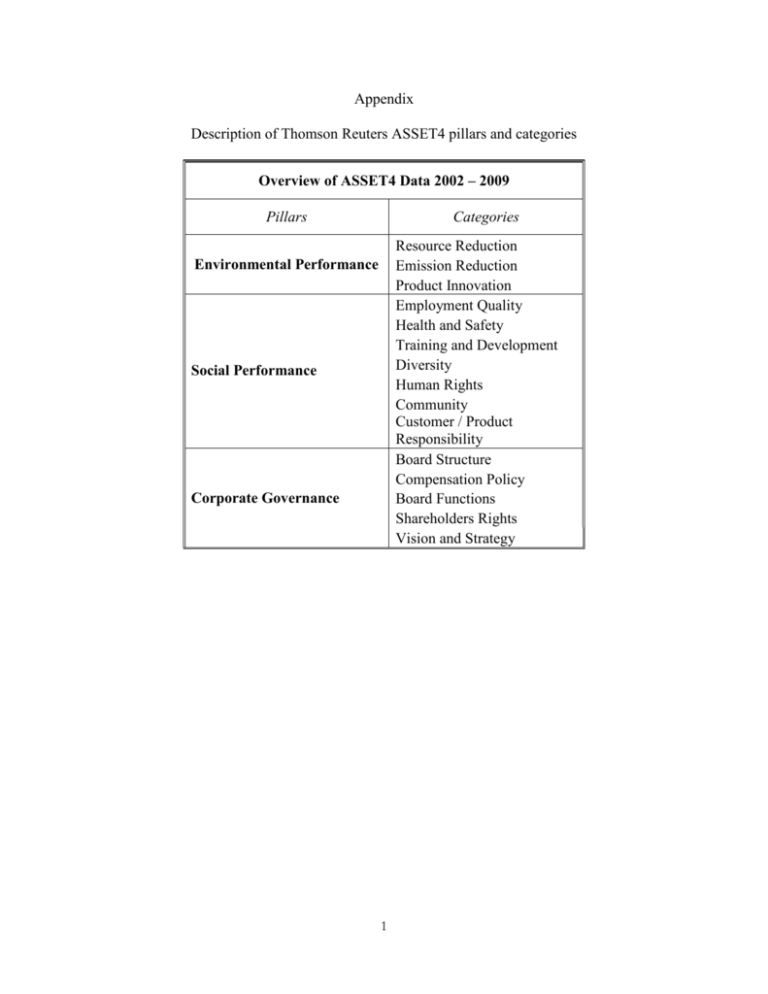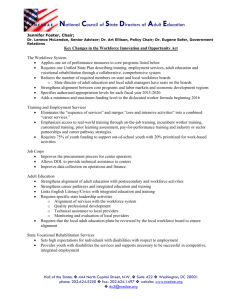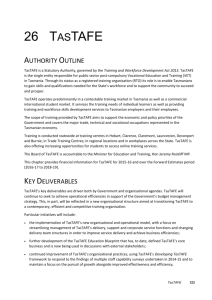Emission Reduction
advertisement

Appendix Description of Thomson Reuters ASSET4 pillars and categories Overview of ASSET4 Data 2002 – 2009 Pillars Categories Resource Reduction Emission Reduction Product Innovation Employment Quality Health and Safety Training and Development Diversity Human Rights Community Customer / Product Responsibility Board Structure Compensation Policy Board Functions Shareholders Rights Vision and Strategy Environmental Performance Social Performance Corporate Governance 1 Description of ASSET4 Categories (from ASSET4 documents) Environmental Performance Pillar Resource Reduction The resource reduction category measures a company‘s management commitment and effectiveness towards achieving an efficient use of natural resources in the production process. It reflects a company‘s capacity to reduce the use of materials, energy or water, and to find more eco-efficient solutions by improving supply chain management. Emission Reduction The emission reduction category measures a company‘s management commitment and effectiveness towards reducing environmental emission in the production and operational processes. It reflects a company‘s capacity to reduce air emissions (greenhouse gases, Fgases, ozone-depleting substances, NOx and SOx, etc.), waste, hazardous waste, water discharges, spills or its impacts on biodiversity and to partner with environmental organizations to reduce the environmental impact of the company in the local or broader community. Product Innovation The product innovation category measures a company‘s management commitment and effectiveness towards supporting the research and development of eco-efficient products or services. It reflects a company‘s capacity to reduce the environmental costs and burdens for its customers, and thereby creating new market opportunities through new environmental technologies and processes or eco-designed, dematerialized products with extended durability. Social Performance Pillar Employment Quality The workforce / employment quality category measures a company‘s management commitment and effectiveness towards providing high-quality employment benefits and job conditions. It reflects a company‘s capacity to increase its workforce loyalty and productivity by distributing rewarding and fair employment benefits, and by focusing on long-term employment growth and stability by promoting from within, avoiding lay-offs and maintaining relations with trade unions. Health and Safety The workforce / health and safety category measures a company‘s management commitment and effectiveness towards providing a healthy and safe workplace. It reflects a company‘s capacity to increase its workforce loyalty and productivity by integrating into its day-to-day operations a concern for the physical and mental health, well being and stress level of all employees. Training and Development The workforce / training and development category measures a company‘s management commitment and effectiveness towards providing training and development (education) for its workforce. It reflects a company‘s capacity to increase its intellectual capital, workforce 2 loyalty and productivity by developing the workforce‘s skills, competences, employability and careers in an entrepreneurial environment. Diversity and Opportunity The workforce / diversity and opportunity category measures a company‘s management commitment and effectiveness towards maintaining diversity and equal opportunities in its workforce. It reflects a company‘s capacity to increase its workforce loyalty and productivity by promoting an effective life-work balance, a family friendly environment and equal opportunities regardless of gender, age, ethnicity, religion or sexual orientation. Human Rights The society / human rights category measures a company‘s management commitment and effectiveness towards respecting the fundamental human rights conventions. It reflects a company‘s capacity to maintain its license to operate by guaranteeing the freedom of association and excluding child, forced or compulsory labor. Community The society / community category measures a company‘s management commitment and effectiveness towards maintaining the company‘s reputation within the general community (local, national and global). It reflects a company‘s capacity to maintain its license to operate by being a good citizen (donations of cash, goods or staff time, etc.), protecting public health (avoidance of industrial accidents, etc.) and respecting business ethics (avoiding bribery and corruption, etc.). Customer / Product Responsibility The customer / product responsibility category measures a company‘s management commitment and effectiveness towards creating value-added products and services upholding the customer‘s security. It reflects a company‘s capacity to maintain its license to operate by producing quality goods and services integrating the customer‘s health and safety, and preserving its integrity and privacy also through accurate product information and labeling. Corp. Governance Pillar Board Structure The board of directors / board structure category measures a company‘s management commitment and effectiveness towards following best practice corporate governance principles related to a well-balanced membership of the board. It reflects a company‘s capacity to ensure a critical exchange of ideas and an independent decision-making process through an experienced, diverse and independent board. Compensation Policy The board of directors / compensation policy category measures a company‘s management commitment and effectiveness towards following best practice corporate governance principles related to competitive and proportionate management compensation. It reflects a company‘s capacity to attract and retain executives and board members with the necessary skills by linking their compensation to individual or company-wide financial or extrafinancial targets. 3 Board Functions The board of directors / board functions category measures a company‘s management commitment and effectiveness towards following best practice corporate governance principles related to board activities and functions. It reflects a company‘s capacity to have an effective board by setting up the essential board committees with allocated tasks and responsibilities. Shareholder Rights The shareholders / shareholder rights category measures a company‘s management commitment and effectiveness towards following best practice corporate governance principles related to a shareholder policy and equal treatment of shareholders. It reflects a company‘s capacity to be attractive to minority shareholders by ensuring them equal rights and privileges and by limiting the use of anti-takeover devices. Vision and Strategy The integration / vision and strategy category measures a company‘s management commitment and effectiveness towards the creation of an overarching vision and strategy integrating financial and extra-financial aspects. It reflects a company‘s capacity to convincingly show and communicate that it integrates the economic (financial), social and environmental dimensions into its day-to-day decision-making processes. 4








